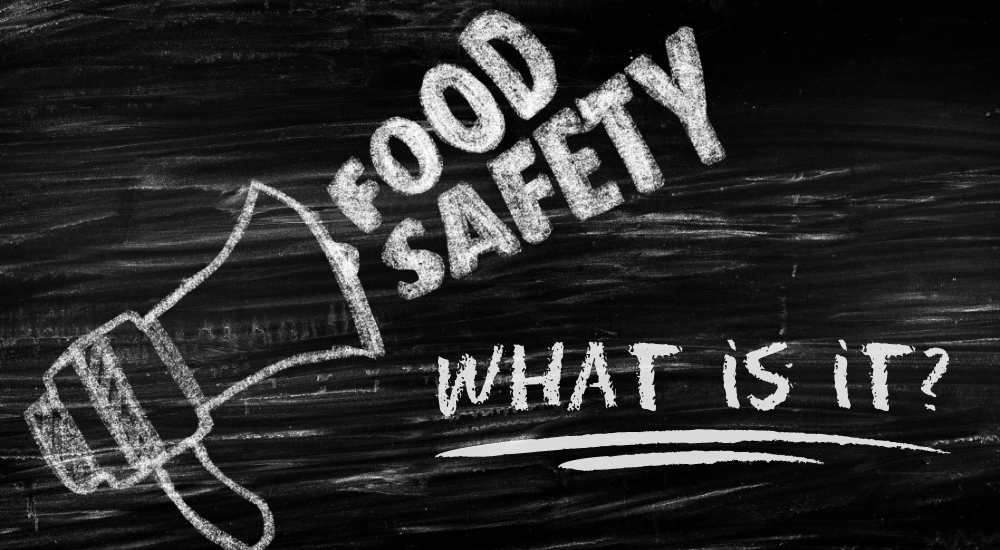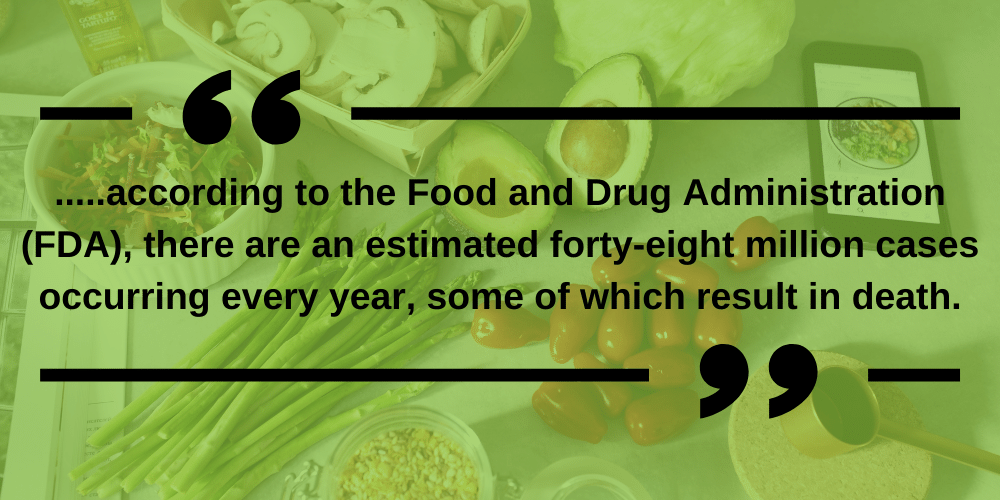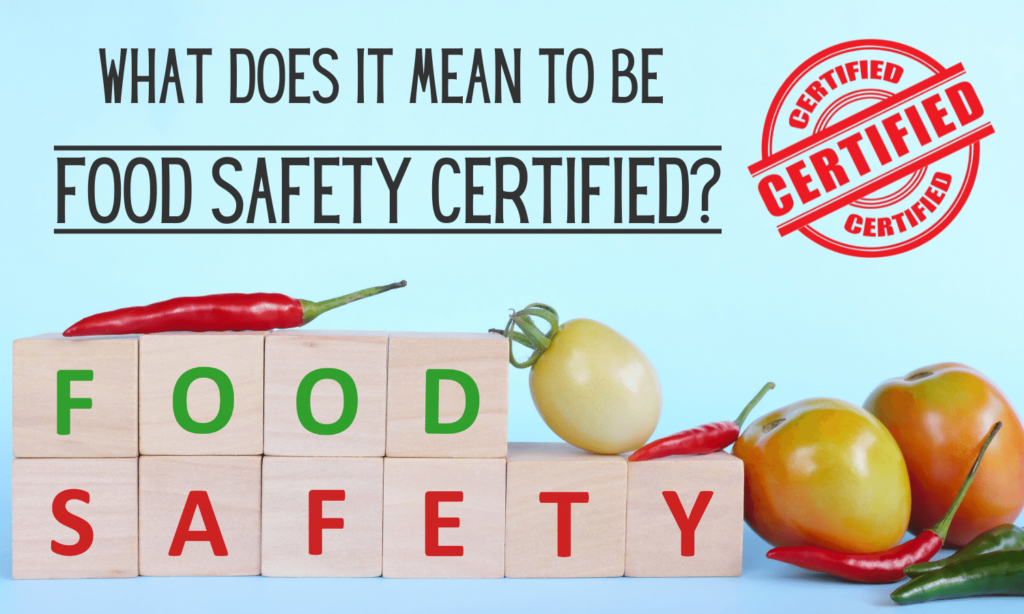The Meaning of Being Food Safety Certified
People who love to eat are always the best people.
–Julia Child
We all have to eat in order to live. By that definition, it would be difficult to find anyone who would not be considered a foodie! And since many of us love to eat, it becomes important to know that the food we consume is prepared safely.
The History of Food Safety
People have always been at risk for foodborne illnesses. In fact, much of what we know about safe food preparation, i.e., cooking, canning, smoking, and fermentation, can be traced back to primitive food safety measures.
Thankfully, we now enjoy the benefits of centuries of scientific and technological research that have made the foods and beverages we consume something we take for granted. This is mostly due to the high quality food safety plans that establishments implement.
Today, food safety and the rigor with which it is enforced is a comparatively new development. The story of how it all began was revisited in a 2016 edition of The New York Times:
President Theodore Roosevelt signed two historic bills aimed at regulating the food and drug industries into law on June 30, 1906. With decisive strokes of his pen on that oppressively hot day, Roosevelt also provided Upton Sinclair with the greatest validation for which any muckraker could hope. It was Sinclair’s novel, “The Jungle” that helped spur the public outrage that led to the legislation.
“The Jungle”, a harrowing account of a Lithuanian immigrant’s experience laboring in Chicago’s meatpacking industry, was serialized in the Socialist magazine “Appeal to Reason” in 1905 before the installments were collected and published as a book in 1906. It came on the heels of exposés by the press and after months of reporting in Chicago’s Packingtown, as the neighborhood around the stockyards was known, by Sinclair himself.
“The Jungle’s” grotesque descriptions of conditions endured by workers and livestock, and the contaminated food that came from them, made it a runaway hit and catalyzed the public’s fear and fury.
Public outrage over the lack of food safety
The public’s outrage propelled the government into action, and the Meat Inspection Act was passed the following year, establishing sanitary standards for slaughtering and butchering animals. This hallmark legislation also marked the first time that food processing facilities were subject to regular food safety audits and inspections. It also saw some of the earliest laws legislating food safety in manufacturing.
Over time, food production became increasingly mechanized and food manufacturers began to enjoy increasing profits. Consequently, new laws were necessary to prevent the intentional sale of food products that were mislabeled, contaminated, or otherwise tampered with. It was also at this time that ingredients and additives began to be subject to governmental regulation.
In the decades following World War II, the invention of the electric refrigerator changed the way food was purchased and stored. This innovation ignited the rapid expansion of industrial food production and consequently an increasing need for stricter food regulations.

What is Food Safety?
Food safety draws from the academic fields of chemistry, microbiology, and engineering. At first glance, these diverse schools of thought may seem unrelated. However, they actually intersect, ensuring that food processing is safe, regardless of where food products are sourced, manufactured, prepared, stored, or sold.
Food safety is the application of resources and strategies that ensure the food you serve is managed and processed in a safe and healthy way so that foodborne illnesses are avoided. In short, food safety protects customers from any harm from the food they consume at your establishment.
From the point of harvest, to the factory for preparation for sale, to the kitchen for preparation, to the table for consumption, food products are at risk for encountering any number of health hazards. Therein lies the need for safe food handling practices and procedures throughout the food production life cycle, critical to curbing risks and preventing harm to consumers.
Five steps commonly followed in food safety are:
- preventing the contamination of food
- separating raw and cooked foods
- cooking foods at the right temperature
- storing food at the correct temperature
- using safe, clean water

What Is Food Safety Certification?
Food-borne illnesses are a significant issue in the U.S. In fact, according to the Food and Drug Administration (FDA), there are an estimated forty-eight million cases occurring every year, some of which result in death. By following approved protocols for handling food, including preparation, this risk can be greatly reduced.
Food safety certification confirms that the product itself is safe to consume, and that by holding this credential, the business has met professional as well as ethical standards for handling food products.
These food safety standards include:
- thoroughly cleaning and sanitizing all surfaces, equipment and utensils used to process food
- preparing, processing, and storing food with the right temperature, environment, and equipment standards
- maintaining a high standard of personal hygiene on the job
- keeping customers safe from pathogens and contaminants that cause food poisoning
- how food contamination occurs and how it can threaten the health and lives of those with food allergies and intolerances
- the legal obligations regarding food handling
- the proper implementation of pest control measures
The goal of food safety
The goal of food safety professionals should be to create a food-safe culture that encompasses shared values, beliefs, and norms affecting a business’s mindset and behavior. Certified Food Managers are an integral part of this culture, keeping customers safe from foodborne illnesses, such as food poisoning, allergic reaction, and other risks that occur from consuming contaminated food.
The impact of a positive food safety culture on the success of a business cannot be underestimated.
Benefits of a positive food safety culture include:
- regulatory compliance,
- reduced customer complaints,
- sustainability,
- brand protection, and
- risk mitigation.
The Cost Of Food Safety Is A Bargain
Food safety protects consumers from health risks linked to common allergens and foodborne illnesses. This alone is reason to invest time and money in proper training.
Food safety also protects businesses and their stakeholders from costly penalties and legal action. In short, it is just the smart…and right, thing to do.

